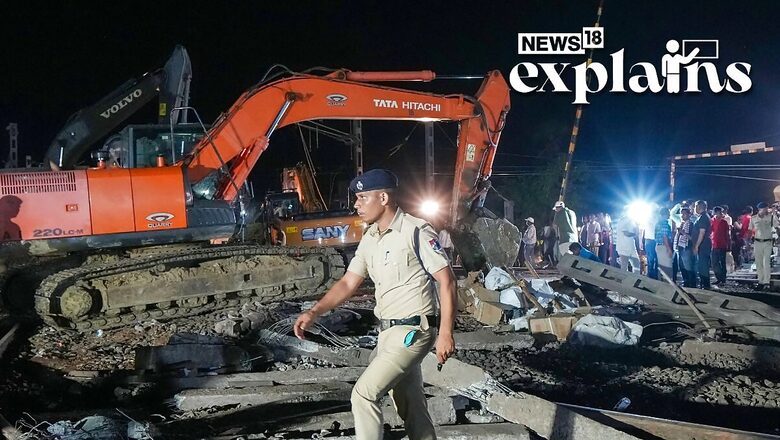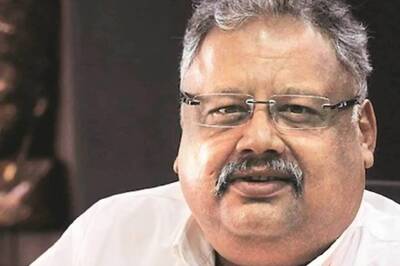
views
A change in electronic interlocking led to the Odisha train accident that has killed around 290 people, Railways Minister Ashwini Vaishnaw said on Sunday. This fatal move led to the Coromandel Express move to the loop line from the main line and crash into a goods train that was parked there.
“Whoever did it and how it happened will come out during the detailed investigation,” the Minister said. A senior Ministry official told News18 on the condition of anonymity that the electronic interlocking system is very robust and it is likely that it was manipulated.
On being asked if it was a system issue or manually manipulated, the official added that “it is possible it was manipulated manually.” A final investigation report is awaited on the mishap.
The Minister stressed that this accident had “nothing to do with Kavach”, the anti-collision system that has not been installed on this particular stretch yet.
The Coromandel Express was supposed to pass through when the ‘up line’ signal at a speed of more than 125 kmph but due to this “electronic interlocking” failure, the signal for going in the main line was taken off and the Coromandel Express entered the loop line to crash into a goods train that was parked there.
This led to the derailment of the Coromandel Express and the derailed coaches impacted coaches of another passenger train passing on the main ‘down line.’
What is Electronic interlocking?
Interlocking is an integral part of Railway signalling, with which functions in a yard are controlled in a manner that ensures safe passage of the train through the controlled area.
Railway signalling has come a long way from not being interlocked, mechanical and electro-mechanical interlocking. With the advent of electronics and computers, there have been revolutionary changes in the field of railway signalling.
Electronic interlocking is a part of that.
Electronic interlocking is a microprocessor based interlocking equipment to read the yard and panel inputs and process them in a fail-safe manner as per selection table and generate required output.
“This system is the alternative to the conventional relay interlocking system,” the official explained.
When compared to the electro-mechanical or conventional panel interlocking, electronic interlocking systems have several advantages such as reduced space requirements, self-diagnostic features, safety and reliability.
It has fault tolerant and fail safety techniques and found acceptance long back in all advanced countries of Europe, Australia, Japan, USA, Germany and France.
The electronic interlocking offers many advantages as it is easy to install and commission, modifications in yard can easily be configured, and the system provides easier operation facility by means of Video Display Units for Station Masters.
Additionally advanced features like blocking of signals, track circuits and points for safety functions can also be built into electronic interlocking.
India made since 2005
The specification of EI was first developed in 1998 and subsequently in 2004 and the final draft was issued in 2005 that is being followed till date.
Initially, it was being imported from outside but post 2005, firms started designing this in India. Electronic interlocking systems used in India are MICROLOCK-II (ASTS); WESTRACE (INVENSYS); VHLC (GE) and MEI 633 (MEDHA).
Medha MEI633 EI system is an indigenously developed Electronic Interlocking system and has been installed on a number of stations of Indian Railways.
According to the website of Medha, the Electronic Interlocking System MEI 633 is a fail-safe, state-of-the-art distributed interlocking system.
“The System has been designed to CENELEC Standards to meet SIL-4 safety specification. It is based on two out of two architecture with a hot standby provision and automatic change-over facility. The System provides all the Interlocking features including Route Setting, Route Release, Point Operation, Track Occupancy Monitoring, Overlap Protection, Crank Handle Operation, Level Crossing Gate Interlocking, and provision for Block working,” it reads.
EI being adopted on a large scale
Electronic interlocking is being adopted on a large scale to derive benefits of digital technologies in train operation and to enhance safety.
In the year 2022-23, the electronic interlocking systems have been provided at 347 stations.
The official added that around 2,900 stations have been provided with electronic interlocking up to December 31, 2022 – covering 45.5 per cent of the railway network.
Till 2014, only 735 stations on Indian Railways were provided with Electronic Interlocking whereas 877 EI have been commissioned in the last two years only, they added.




















Comments
0 comment